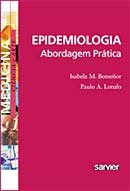Abaixo, a descrição de teorias conspiratórias sobre o caso Avandia retiradas do heartwire.
Rosiglitazone meta-analysis continues to drive controversy in second week
May 30, 2007Lisa Nainggolan
New York, NY - The fallout continues from the publication in the New England Journal of Medicine (NEJM) last week of a meta-analysis of rosiglitazone (Avandia, GlaxoSmithKline [GSK]), which suggested it increases the risk of MI and cardiovascular death. As reported by heartwire, many experts have said the data were far from perfect and have expressed concern about the manner in which they were released. But new reports go one step further—suggesting that FDA whistleblowers coordinated with politicians critical of the agency and the study authors to get damaging data into the public arena before the FDA could issue a safety statement on rosiglitazone.
And damage has certainly been done in the form of a battering of the stock of GlaxoSmithKline, as Avandia was until now a $3-billion-a-year drug. Shares of the company were today at their lowest level in two years, following the sixth drop in seven trading days. Prescriptions for Avandia have also plummeted, with its slice of new oral diabetes prescriptions dropping from 10% to almost zero in the two days following the NEJM report.
As part of the company's response to the controversy, chief medical officer of GSK, Dr Ronald L Krall, has written a letter, published online in the Lancet today In support of the cardiovascular safety of rosiglitazone, he cites, among other things, the decision by the independent data safety monitoring board to continue the ongoing Rosiglitazone Evaluated for Cardiac Outcomes and Regulation of Glycemia in Diabetes (RECORD) study, which is specifically designed to look at cardiovascular outcomes with rosiglitazone.
However Krall told the New York Times last week that the RECORD study could be under threat because some of the patients have dropped out of the trial due to safety concerns following last week's events
Conspiracy theories
An in-depth feature in a biotechnology weekly newsletter relates the tale of who knew what and when with regard to the rosiglitazone saga. US politicians have "portrayed Avandia as the quintessential. . . . Washington scandal, complete with maverick outsider who exposes wrongdoers and alerts congressional guardians of the public health," writes Steve Usdin in BioCentury
But according to an editorial by former FDA deputy commissioner Scott Gottlieb, published May 29, 2007 in the Wall Street Journal, the truth is that the study authors, the NEJM, and politicians with their own motives tried to upstage the FDA in an attempt to influence public debate.According to Gottlieb, lead author Dr Steve Nissen (Cleveland Clinic, OH) submitted his manuscript to the NEJM on May 1 and did not inform either the FDA or GSK. The journal expedited the review of the paper and commissioned a commentary from two well-known critics of FDA's drug safety record, Drs Curt Furberg (University of Washington, Seattle) and Bruce Psaty (Wake Forest University, Winston-Salem, NC). The paper and commentary were published online by the NEJM on May 21, a move Gottlieb says was "timed to get ahead of the FDA's more careful evaluation of the same issues."
The FDA had planned to issue a safety statement about Avandia around May 23, according to an unnamed drug safety official cited in the article by Usdin. Following publication of the NEJM paper, the FDA issued a statement on May 21 saying that its analyses were ongoing and that it would convene an advisory committee on the issues as soon as possible. Gottlieb says the NEJM claims to have made the decision to publish quickly because of the medical importance of the research but, if that were the case, he wonders why it did not inform the FDA about its publication or the findings. "When it comes to the issue du jour, drug safety, no description of medical research in a medical journal comes close to the detail level or scrutiny imposed by the FDA on study results before approval. Yet NEJM and other journals have tried on other occasions to upstage FDA investigations through well-timed but much less complete publications," he asserts.
He adds that there was no mention in the NEJM paper or editorial of rosiglitazone's benefits or of how doctors should advise patients. Steven Galson (director of the FDA's Center for Drug Evaluation and Research) told Usdin: "Medical journals have to take their job seriously. They have a responsibility to patients and physicians to publish information in a responsible and balanced manner. I'm not sure that responsibility was adequately executed in this instance." But NEJM editor Dr Gregory Curfman told BioCentury that his journal is not responsible for the media reactions to the rosiglitazone paper and commentary: "We are a scholarly journal, not a news outlet. What happens in the media is beyond our control

